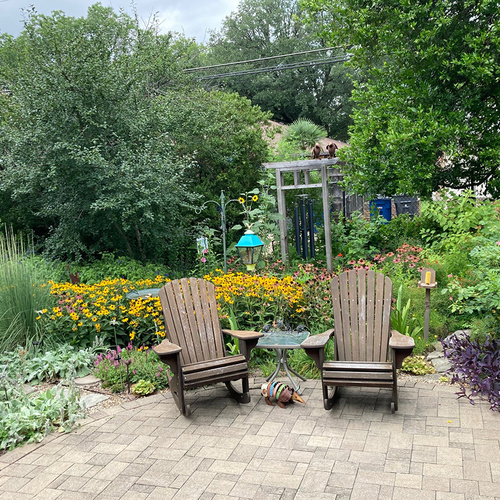
Happy Monday GPODers!
Last summer we were introduced to Sharon Holmes and her incredible wildlife-friendly garden in Dallas, Texas (Check out that submission here: Survivors in Sharon’s Dallas Garden). That introduction focused on her fabulous front garden during spring, and today she has returned with an update that highlights her flower-filled backyard. Sharon doesn’t have a ton of space in her back garden, but has made the most of every possible inch and created a sustainable and beneficial landscape in the process.
I cannot tell you how happy I am to see the Fine Gardening blog in my inbox! The creativity of the gardens I get to see is so inspiring.
I was delighted to share my front yard, and I decided to submit some pictures of my backyard. I am an organic gardener, and have both a National Wildlife Habitat and a Texas Wildscapes certification since 1998. Learning about these programs and supporting native plants and wildlife changed my gardening. We ditched the lawn in the backyard. We’ve had a wet early summer, and things are now out of control! This summer, a Cooper’s hawk (Astur cooperii) decided to nest in our front yard magnolia, and we took down our bird feeders to limit their free lunches.
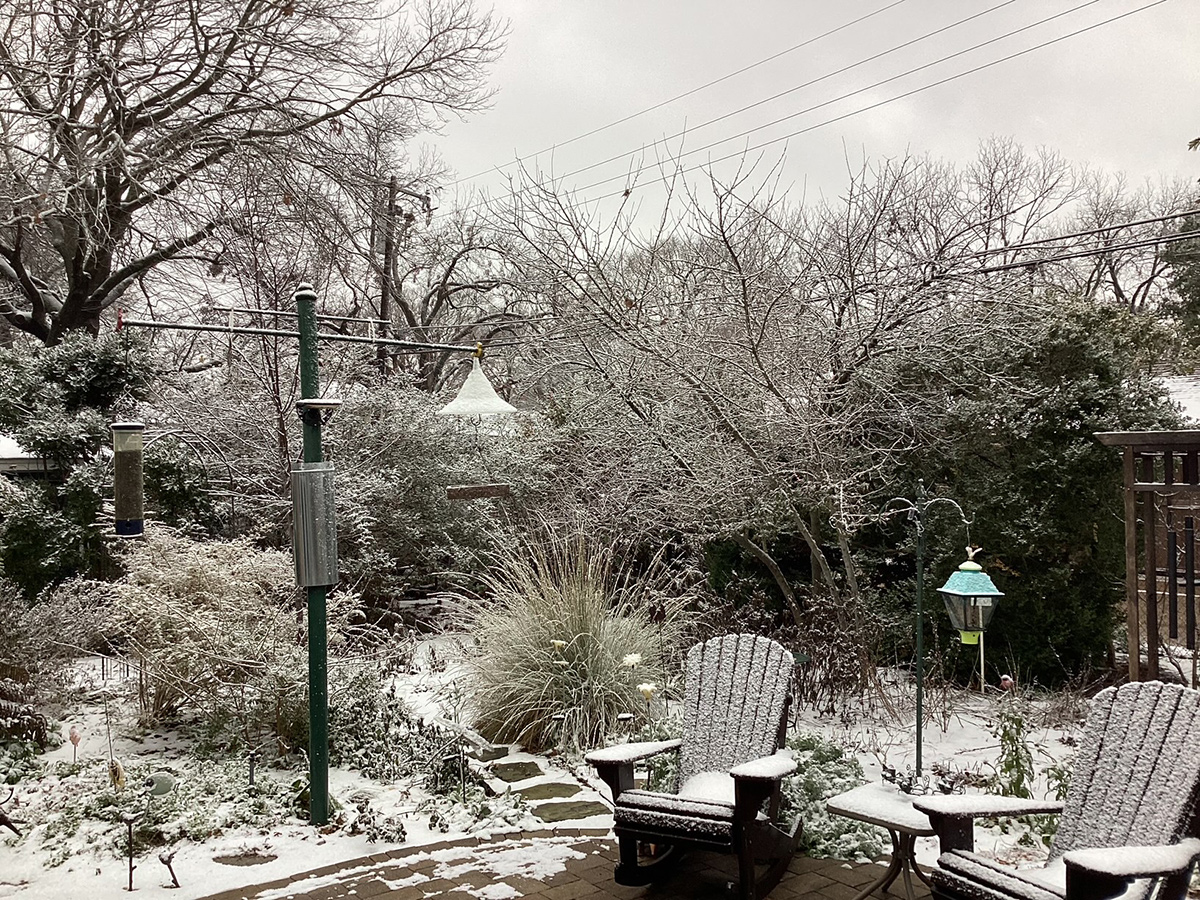 I wanted to submit the view in January this year (snow!)
I wanted to submit the view in January this year (snow!)
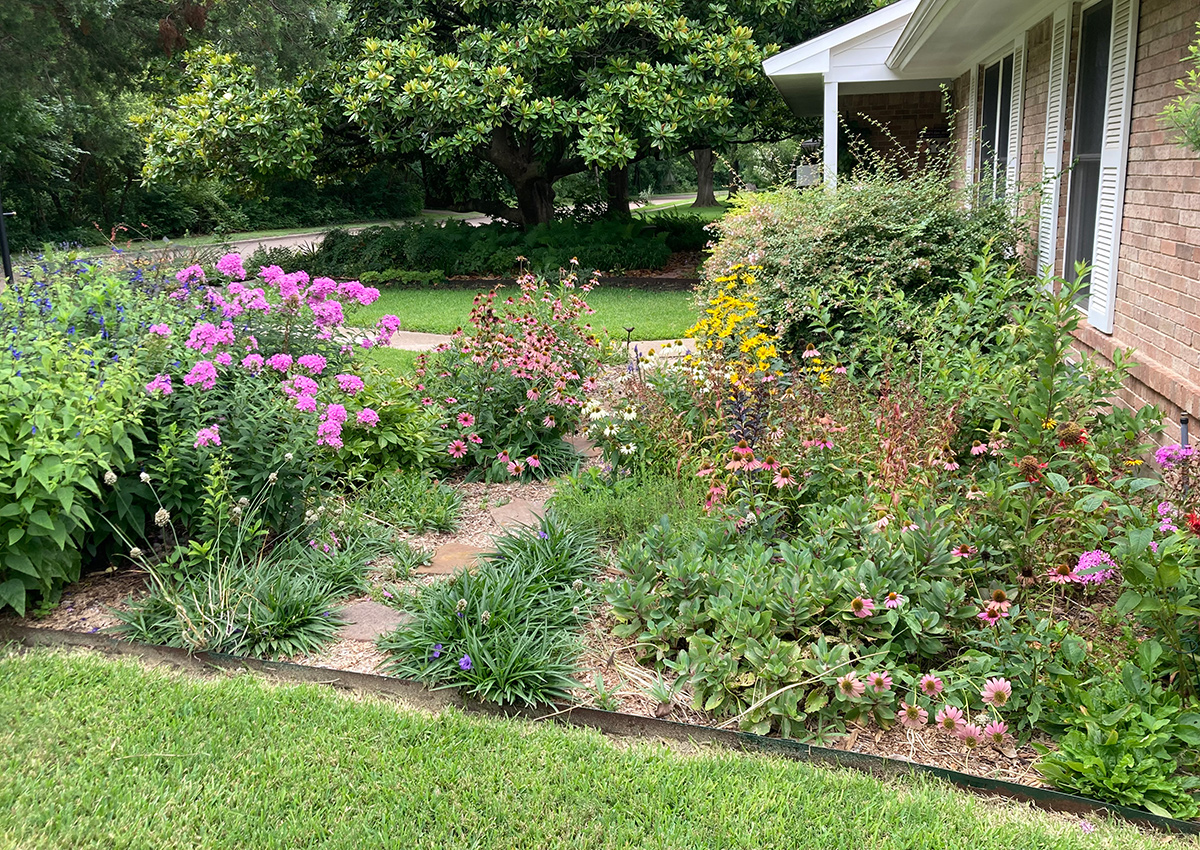 I’ll start in the front yard you saw last year, and walk to the backyard via the east garden.
I’ll start in the front yard you saw last year, and walk to the backyard via the east garden.
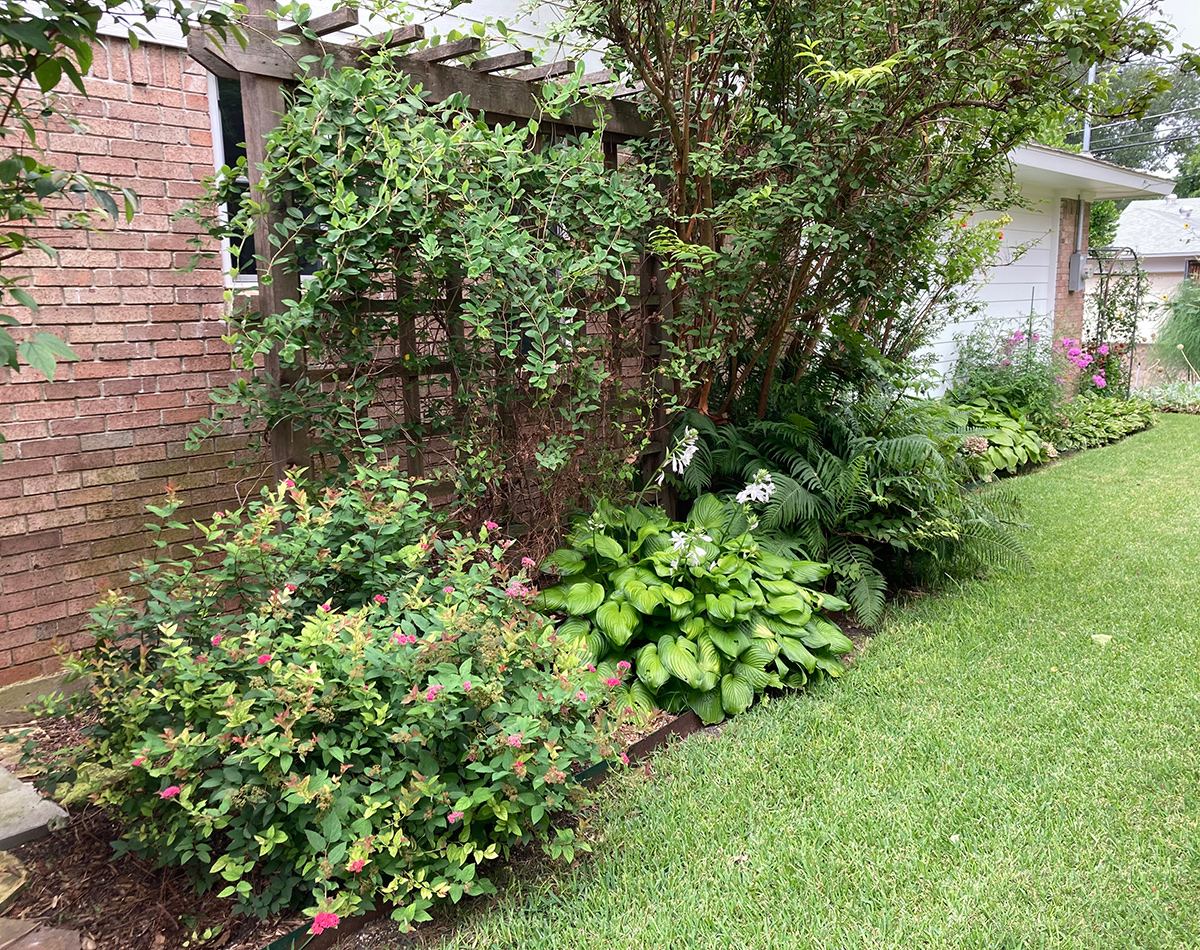 The east side garden has a Double Play Doozie spirea (Spiraea x ‘NCSX2’, Zones 3–8), a yellow native honeysuckle (Lonicera flava, Zones 5–8) on a trellis, a deutzia, ferns, Guacamole hosta (Hosta ‘Guacamole’, Zones 3–8), pomegranate (Punica granatum, Zones 8–10), Aphrodite hosta (Hosta ‘Aphrodite’, Zones 3–8), pink phlox, and box-store hosta my papa gave me when we moved in.
The east side garden has a Double Play Doozie spirea (Spiraea x ‘NCSX2’, Zones 3–8), a yellow native honeysuckle (Lonicera flava, Zones 5–8) on a trellis, a deutzia, ferns, Guacamole hosta (Hosta ‘Guacamole’, Zones 3–8), pomegranate (Punica granatum, Zones 8–10), Aphrodite hosta (Hosta ‘Aphrodite’, Zones 3–8), pink phlox, and box-store hosta my papa gave me when we moved in.
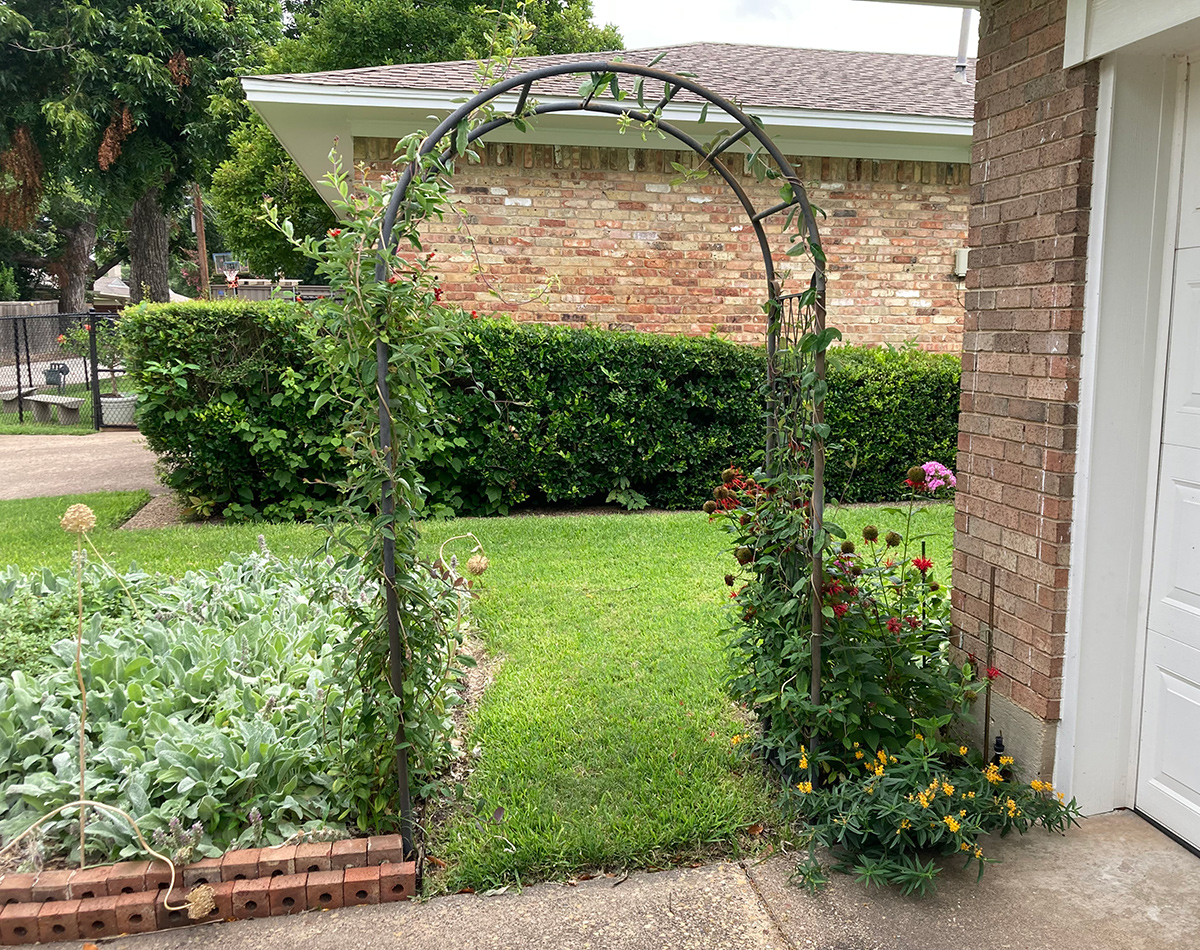 At the backyard gate, looking back on the east arch with a Scentsation honeysuckle (Lonicera periclymenum ‘Scentsation’, Zones 4–9), relocated there this spring. The Jacob Cline bee balm (Monarda didyma ‘Jacob Cline’, Zones 4–9) is taking a rest, the butterfly weed below hasn’t stopped since spring.
At the backyard gate, looking back on the east arch with a Scentsation honeysuckle (Lonicera periclymenum ‘Scentsation’, Zones 4–9), relocated there this spring. The Jacob Cline bee balm (Monarda didyma ‘Jacob Cline’, Zones 4–9) is taking a rest, the butterfly weed below hasn’t stopped since spring.
 Overview of the backyard. Ignore the neighbor’s trash bins peeking into the garden, the Turk’s cap (Malvaviscus arboreus var. drummondii, Zones 7–11) will hide them later this year. Goldsturm Black-eyed Susan (Rudbeckia fulgida var. sullivantii ‘Goldsturm’, Zones 3–9), Mexican sunflower (Tithonia rotundifolia, annual), Lindheimer’s muhly (Muhlenbergia lindheimeri, Zones 6–9), possumhaw (Ilex decidua, Zones 5–9), Black and Blue salvia (Salvia guaranitica ‘Black & Blue’, Zones 7–10), coneflower, beautyberry (Callicarpa americana, Zones 6–10), esperanza (Tecoma stans, Zones 10–11).
Overview of the backyard. Ignore the neighbor’s trash bins peeking into the garden, the Turk’s cap (Malvaviscus arboreus var. drummondii, Zones 7–11) will hide them later this year. Goldsturm Black-eyed Susan (Rudbeckia fulgida var. sullivantii ‘Goldsturm’, Zones 3–9), Mexican sunflower (Tithonia rotundifolia, annual), Lindheimer’s muhly (Muhlenbergia lindheimeri, Zones 6–9), possumhaw (Ilex decidua, Zones 5–9), Black and Blue salvia (Salvia guaranitica ‘Black & Blue’, Zones 7–10), coneflower, beautyberry (Callicarpa americana, Zones 6–10), esperanza (Tecoma stans, Zones 10–11).
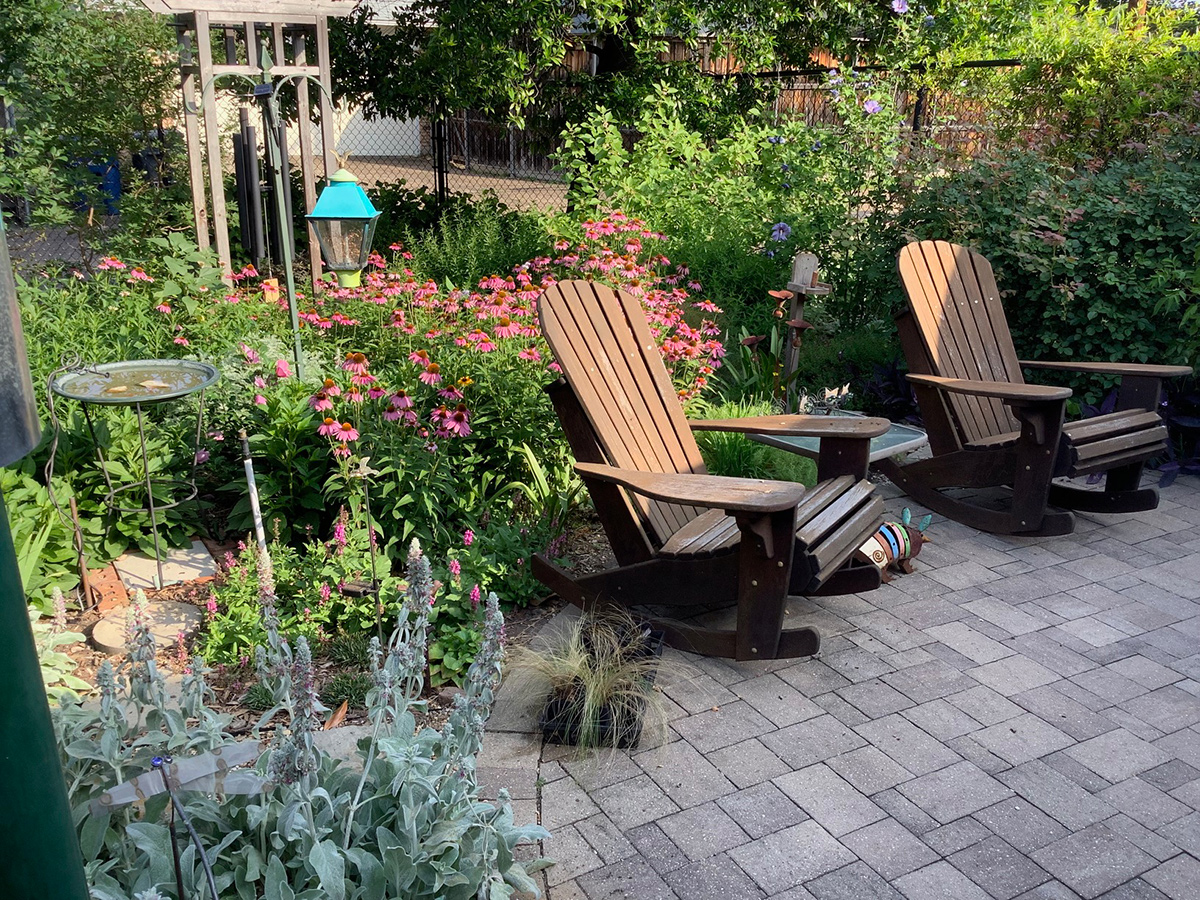 |
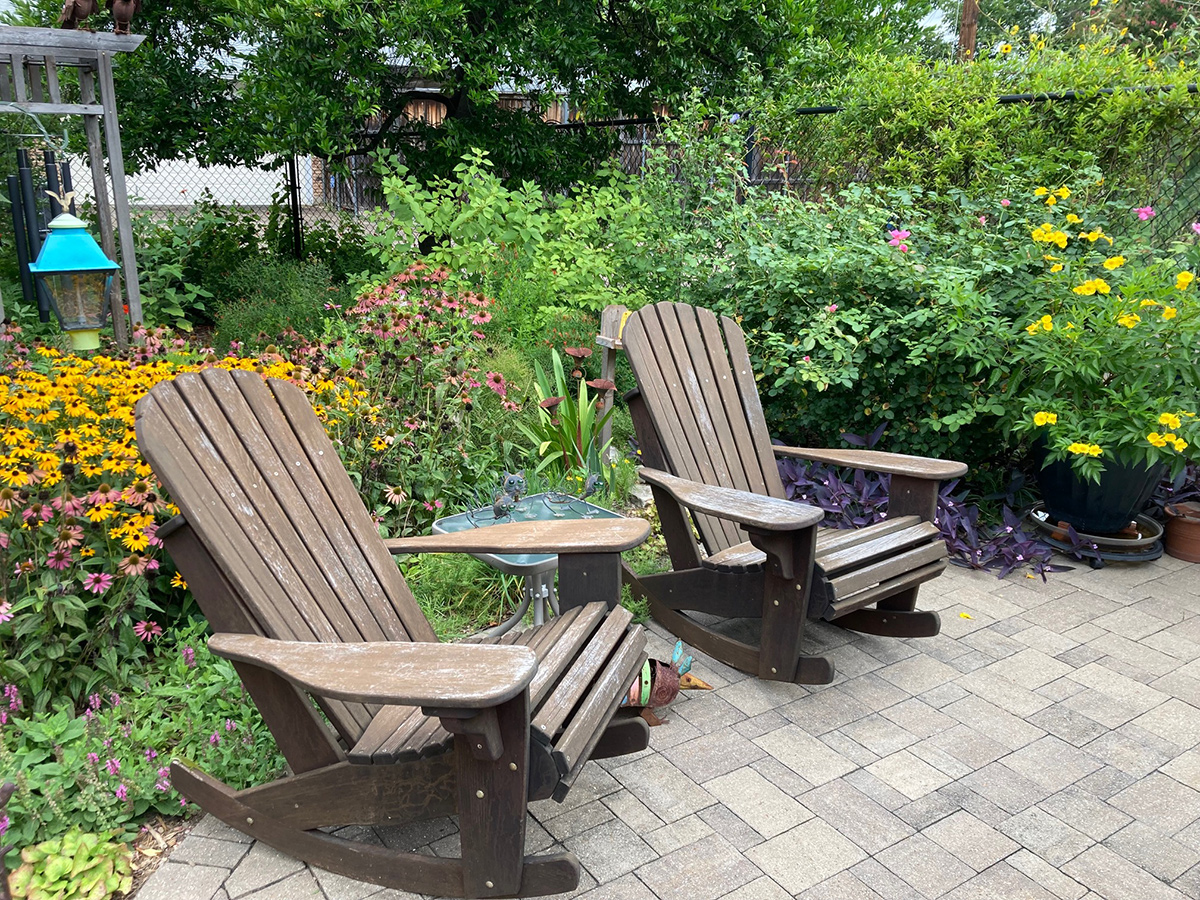 |
Two views, one early June, one July. Coneflowers give way to Goldsturm Black-eyed Susans. The potted Gold Star esperanza (Tecoma stans ‘Lonesp’, Zones 9–11) is blooming, the Pink Nebula salvia (Salvia nemorosa ‘Pink Nebula’, Zones 4–9), purple spiderwort (Tradescantia pallida, Zones 10–11), beautyberry, Katy Road Pink rose (A.K.A. ‘Carefree Wonder’) (Rosa ‘Meipitac’, Zones 4–9).
 Stepping back, Lindheimer’s muhly, Black and Blue salvia, Twist of Lime abelia (Abelia x grandiflora ‘Hopley’s’, Zones 6–9). redbud, possumhaw, and cherry laurel trees (Prunus laurocerasus, Zones 6–8).
Stepping back, Lindheimer’s muhly, Black and Blue salvia, Twist of Lime abelia (Abelia x grandiflora ‘Hopley’s’, Zones 6–9). redbud, possumhaw, and cherry laurel trees (Prunus laurocerasus, Zones 6–8).
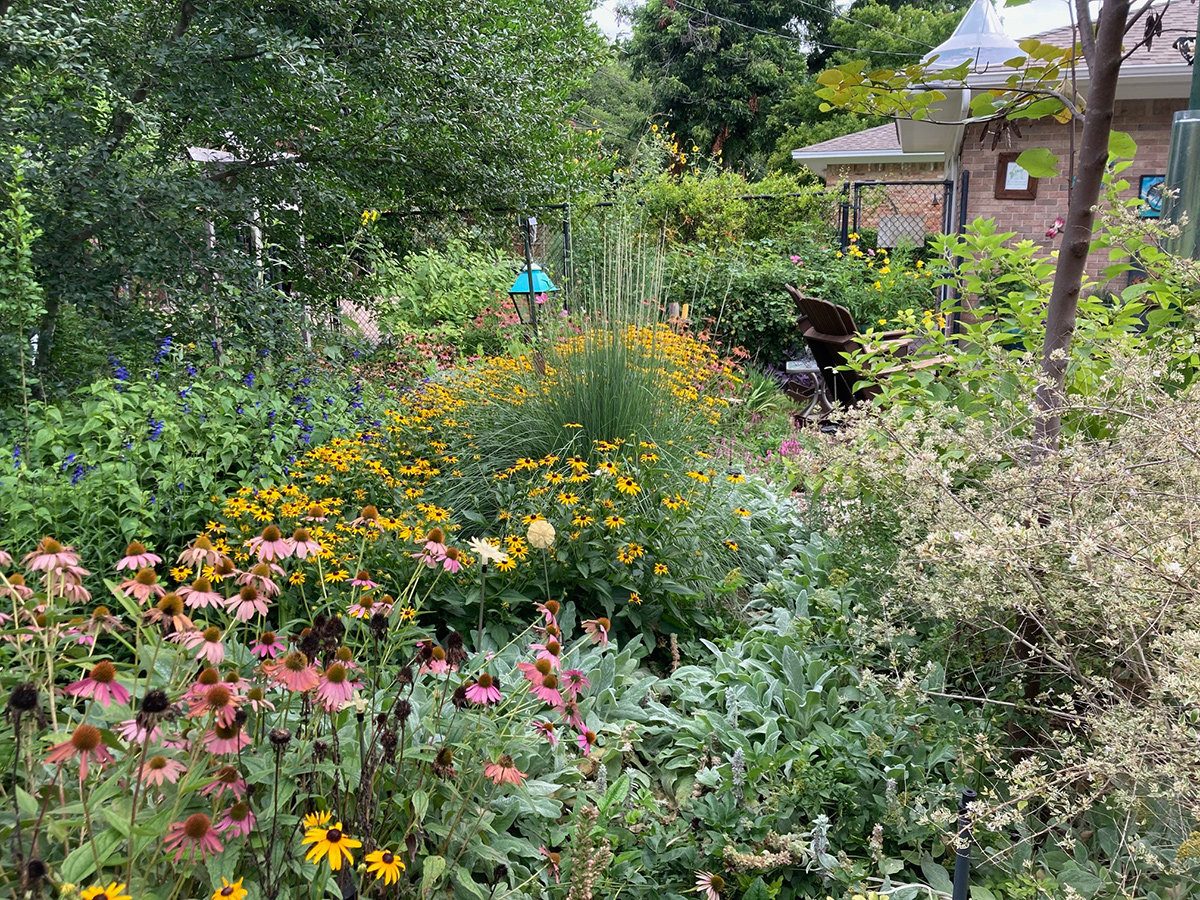 In just a month the path has been covered!
In just a month the path has been covered!
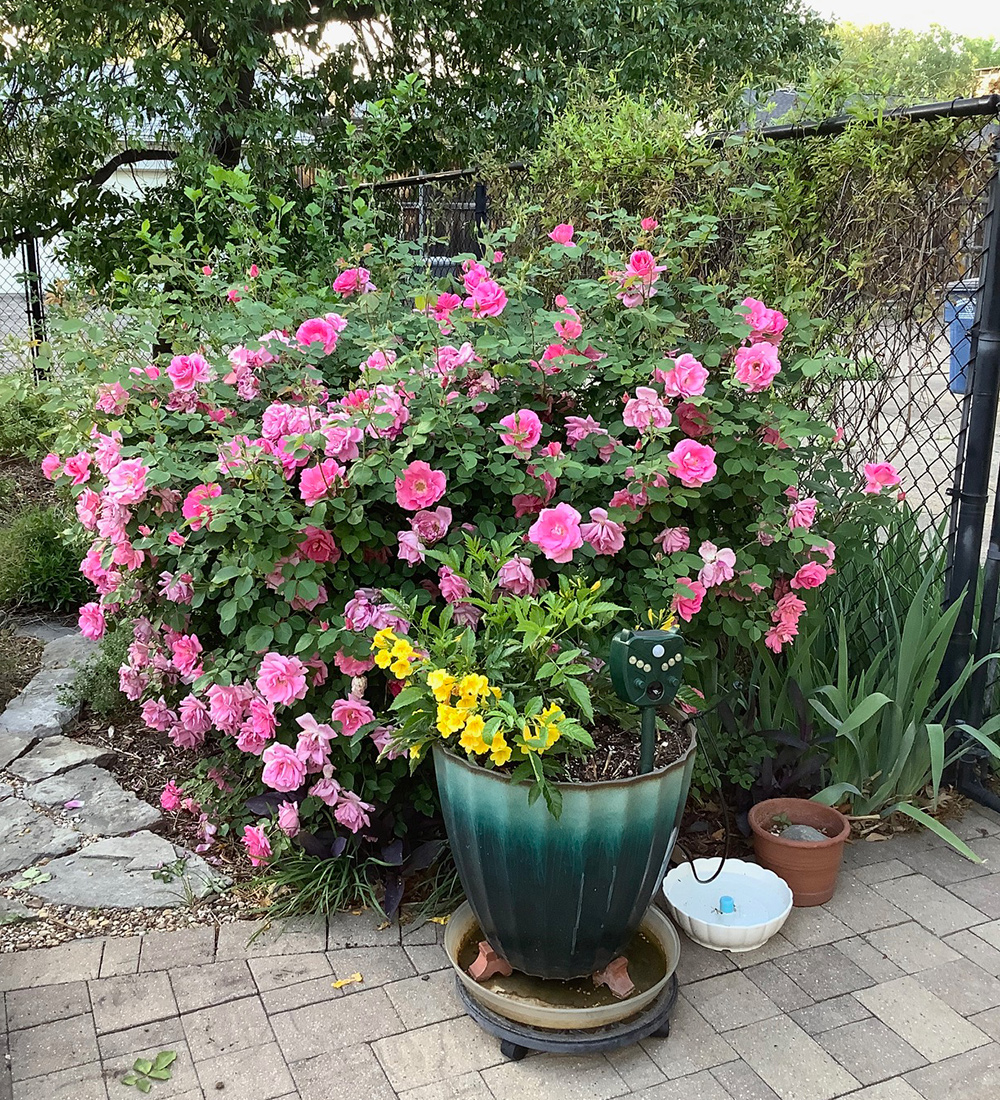 Two antique roses survived the rose rosette virus. Here they are from April: Carefree Wonder pink with a cherry laurel behind…
Two antique roses survived the rose rosette virus. Here they are from April: Carefree Wonder pink with a cherry laurel behind…
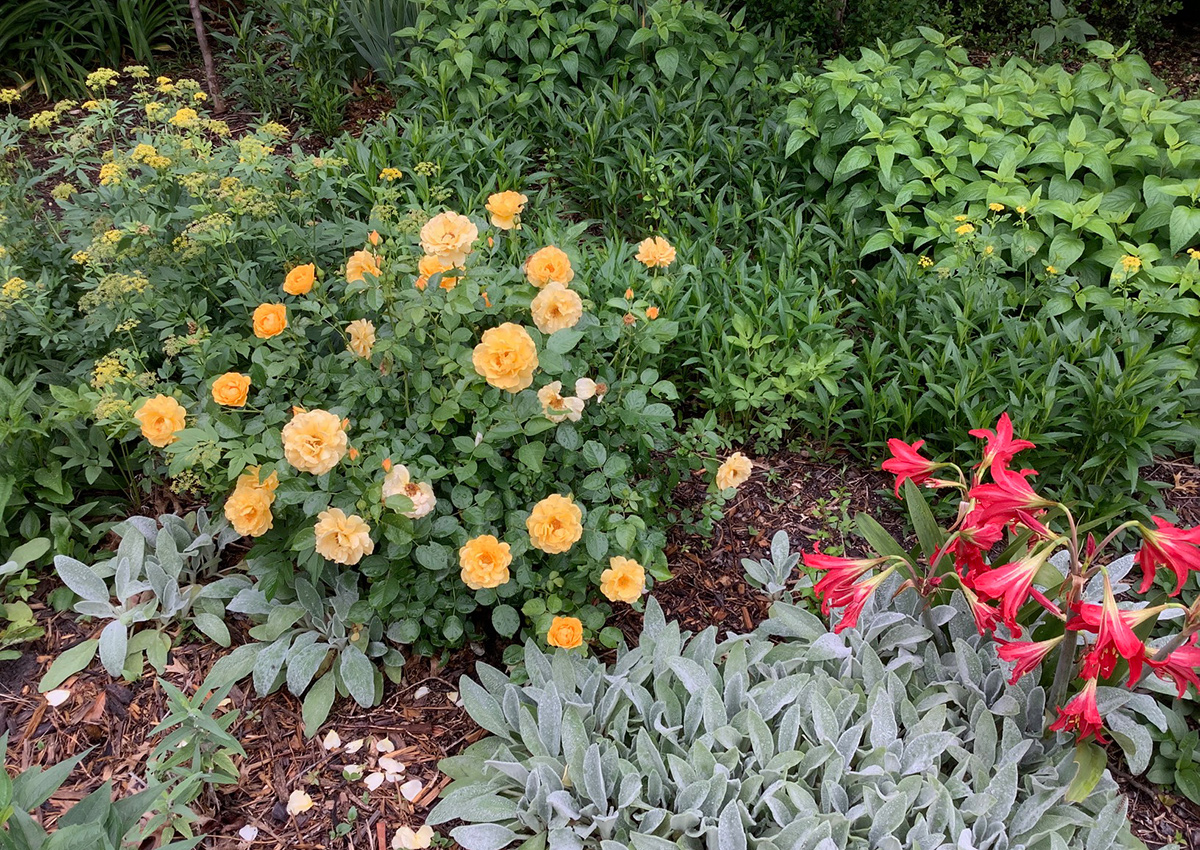 And Harison’s Yellow (Rosa foetida ‘Harison’s Yellow’, Zones 3–9). Harison’s is near some golden alexander (Zizia aurea, Zones 3–8), lambs ear (Stachys byzantina and cvs., Zones 4–8), and a red antique garden amaryllis.
And Harison’s Yellow (Rosa foetida ‘Harison’s Yellow’, Zones 3–9). Harison’s is near some golden alexander (Zizia aurea, Zones 3–8), lambs ear (Stachys byzantina and cvs., Zones 4–8), and a red antique garden amaryllis.
Thank you so much for sharing more of your gorgeous gardens with us, Sharon! It’s incredibly inspiring to see the beauty you are able to cultivate while prioritizing beneficial plants and wildlife-friendly practices.
Is your garden a haven for local wildlife and pollinators like Sharon’s? What plants native to your region do you enjoy growing? Let us know in the comments below how you garden in harmony with the ecosystem, or consider sharing your pollinator paradise with Garden Photo of the Day! Follow the directions below to submit photos via email, or send me a DM on Instagram: @agirlherdogandtheroad.
We want to see YOUR garden!
Have photos to share? We’d love to see your garden, a particular collection of plants you love, or a wonderful garden you had the chance to visit!
To submit, send 5–10 photos to [email protected] along with some information about the plants in the pictures and where you took the photos. We’d love to hear where you are located, how long you’ve been gardening, successes you are proud of, failures you learned from, hopes for the future, favorite plants, or funny stories from your garden.
Have a mobile phone? Tag your photos on Facebook, Instagram, or Twitter with #FineGardening!
Do you receive the GPOD by email yet? Sign up here
Fine Gardening Recommended Products
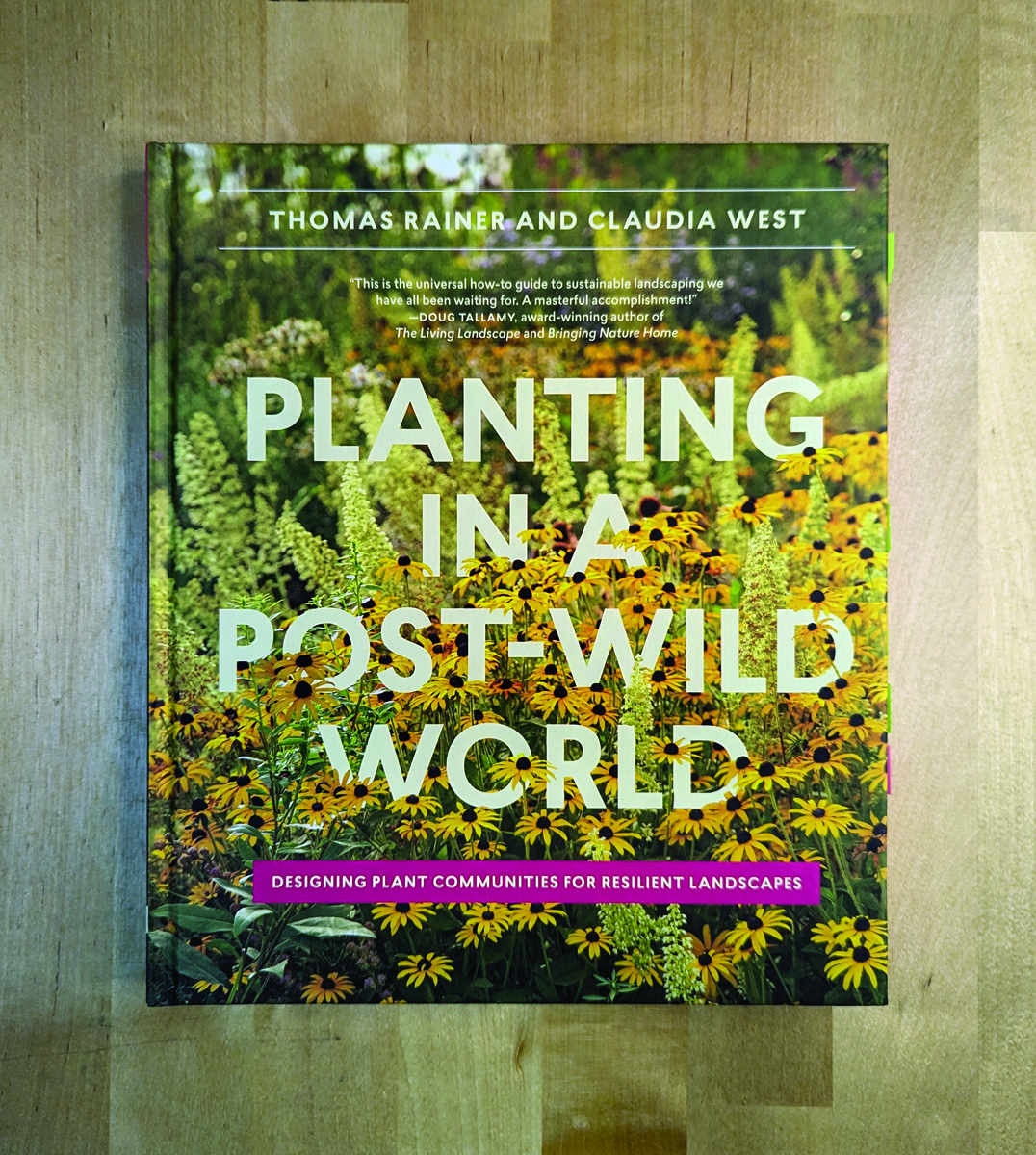
Planting in a Post-Wild World: Designing Plant Communities for Resilient Landscapes
Fine Gardening receives a commission for items purchased through links on this site, including Amazon Associates and other affiliate advertising programs.
Featuring gorgeous photography and advice for landscapers, Planting in a Post-Wild World by Thomas Rainer and Claudia West is dedicated to the idea of a new nature—a hybrid of both the wild and the cultivated—that can nourish in our cities and suburbs.

Organo Republic 16 Perennial Wildflower Seeds Mix for Indoor & Outdoors
Fine Gardening receives a commission for items purchased through links on this site, including Amazon Associates and other affiliate advertising programs.
Premium 16 Perennial Wildflower Seeds Mix – Special Garden Flower Seeds Blend designed for planting indoor & outdoors across North America. With over 16 varieties and 100,000 wildflower seeds, this mix is the best solution to attract pollinators – bees, butterflies & birds are essential for garden plants health. Our Special Perennial Wildflower Seeds Mix Includes White Yarrow, Columbine, New England Aster, Siberian Wallflower, Shasta Daisy, Lance-Leaf Coreopsis, Sweet William, Purple Coneflower, Blanketflower, Gayfeather, Blue Flax, Lupine, Dwarf Evening, Primrose, Mexican Hat, Prairie Coneflower, Black Eyed Susan. Easy & Fun Growing Experience with our online guides – Don’t plant disappointment – Add more colors to your wildflower garden! We send only super hearty heirloom flower seeds with the highest germination rate and fast sprout. Our detailed growing guide helps you grow seeds the garden of your dream like a PRO. Colorful Wildflower Garden from Seeds – Grow wildflowers everywhere – Indoor in window garden or Outdoors Flower garden Garden make a beautiful design for your garden borders, pathways, field or meadow and attract pollinators. Made in the USA by Small Family-Owned Business – Quality You Can Trust – Our wildflower bulk seeds variety pack are tested at the highest germination rates before being sealed to last for up to 3 years before you need to plant. Each packet of our flower seeds variety pack is resealable to make it easy to store and has its own label with a QR code for the growing instructions.
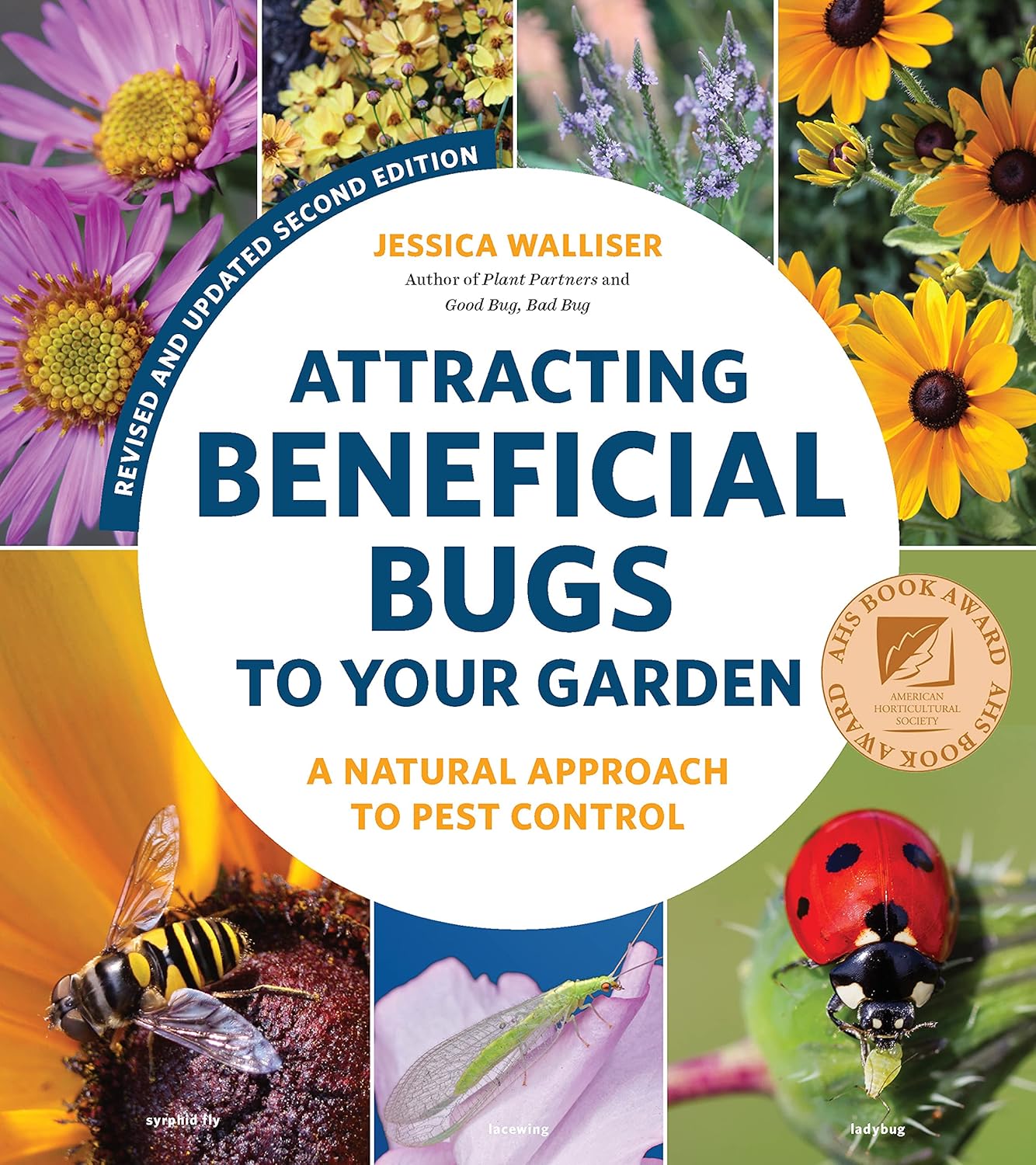
Attracting Beneficial Bugs to Your Garden, Revised and Updated Second Edition: A Natural Approach to Pest Control
Fine Gardening receives a commission for items purchased through links on this site, including Amazon Associates and other affiliate advertising programs.
This revised and updated edition of Jessica Walliser’s award-winning Attracting Beneficial Bugs to Your Garden offers a valuable and science-backed plan for bringing balance back to the garden. With this indispensable gardening reference—now updated with new research, insights, and voices—learn how to create a healthy, balanced, and diverse garden capable of supporting a hard-working crew of beneficial pest-eating insects and eliminate the need for synthetic chemical pesticides.







